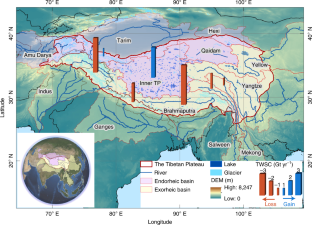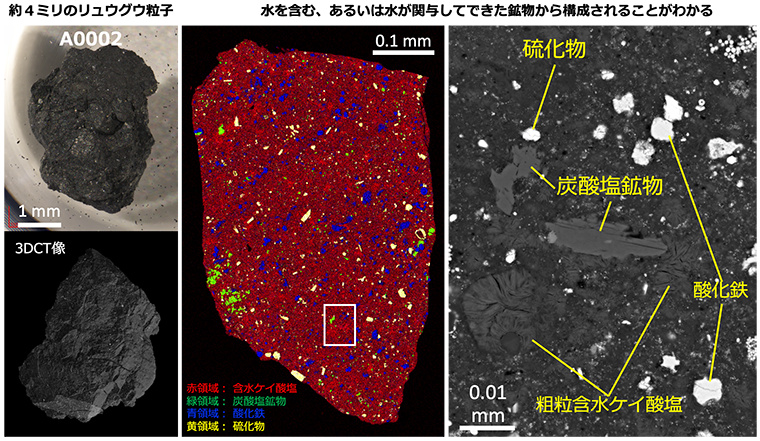チベット高原の水貯蔵に関するこれまでで最も包括的な研究では、緩やかな気候政策シナリオの下、今世紀半ばまでにアジアの一部の淡水貯蔵量が劇的に失われることが予測されています。 Most comprehensive study to date on water storage in Tibetan Plateau projects dramatic losses of freshwater storage in parts of Asia by mid-century under modest climate policy scenario
2022-08-15 ペンシルベニア州立大学(PennState)
今後数十年間、化石燃料の燃焼を有意に抑制できない “通常通り “のシナリオでは、チベット高原の下流域で利用できる水の量が大幅に、つまりほぼ100%失われることが予想される。
研究チームは、氷河、湖、地下水源における水量の「トップダウン」(衛星ベース)と「ボトムアップ」(地上ベース)の測定と機械学習技術を組み合わせて、過去20年間(2002~2020年)のTWS変化の観測値と今後40年間(2021~2060年)の予測値をベンチマークとして使用しました。
次に研究チームは、ニューラルネットを用いた新しい機械学習技術を使って、観測された総貯水量の変化を、気温、降水量、湿度、雲量、入射光などの主要な気候変数と関連づけました。
研究チームは、ここ数十年の気候変動により、チベット高原の一部の地域では貯水量が著しく減少し(-15.8ギガトン/年)、他の地域では貯水量が大幅に増加している(5.6ギガトン/年)ことを発見しました。これは、氷河の後退、季節的凍土の劣化、湖の拡大が競合する影響によるものと思われます。
中程度の炭素排出シナリオ、具体的には中程度のSSP2-4.5排出シナリオの下での将来のTWSに関する研究チームの予測では、21世紀初頭(2002年から2030年)のベースラインと比較して、チベット高原全体が21世紀半ば(2031年から2060年)までに約230ギガトンの純減となる可能性があることが示唆された。
<関連情報>
- https://www.psu.edu/news/earth-and-mineral-sciences/story/irreversible-declines-freshwater-storage-projected-parts-asia-2060/
- https://www.nature.com/articles/s41558-022-01443-0
気候変動がチベット高原の陸上貯水量を脅かす Climate change threatens terrestrial water storage over the Tibetan Plateau
Xueying Li,Di Long,Bridget R. Scanlon,Michael E. Mann,Xingdong Li,Fuqiang Tian,Zhangli Sun & Guangqian Wang
Nature Climate Change Published:15 August 2022
DOI:https://doi.org/10.1038/s41558-022-01443-0

Abstract
Terrestrial water storage (TWS) over the Tibetan Plateau, a major global water tower, is crucial in determining water transport and availability to a large downstream Asian population. Climate change impacts on historical and future TWS changes, however, are not well quantified. Here we used bottom-up and top-down approaches to quantify a significant TWS decrease (10.2 Gt yr–1) over the Tibetan Plateau in recent decades (2002–2017), reflecting competing effects of glacier retreat, lake expansion and subsurface water loss. Despite the weakened trends in projected TWS, it shows large declines under a mid-range carbon emissions scenario by the mid-twenty-first century. Excess water-loss projections for the Amu Darya and Indus basins present a critical water resource threat, indicating declines of 119% and 79% in water-supply capacity, respectively. Our study highlights these two hotspots as being at risk from climate change, informing adaptation strategies for these highly vulnerable regions.



